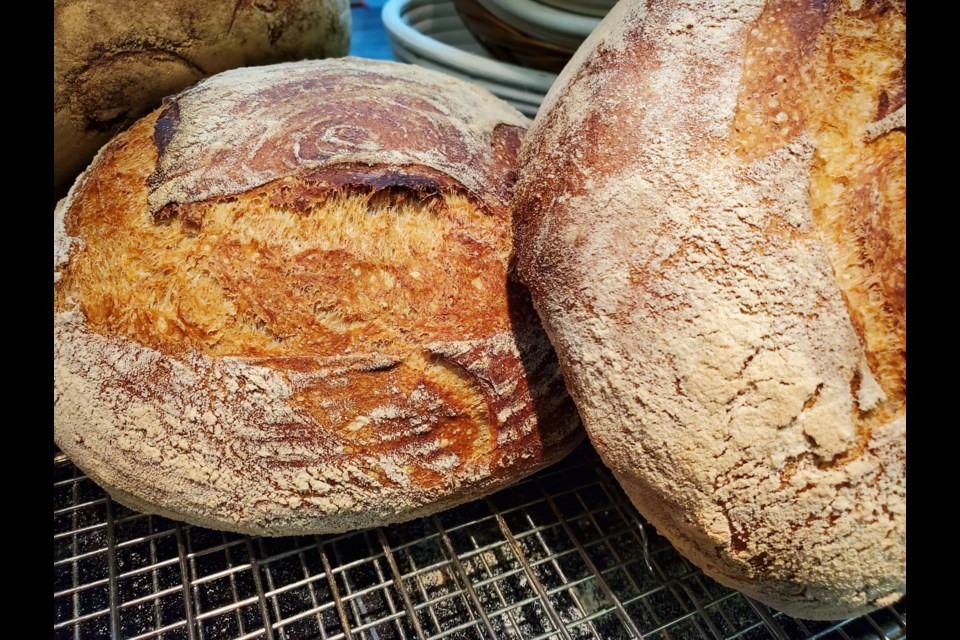Have you ever had really good, freshly baked bread? By really good, I mean either homemade or artisanal bread, made with no additives or preservatives and the best local flour.
If you have not, then I think I can safely say you have never had bread. Bread must be one of the most adulterated food products in the world. Many of the commercially prepared, grocery store varieties have evolved into something that barely compares to the original.
With bleached, white flours, hydrogenated fats, additives, preservatives and commercial yeasts that proof the bread in only minutes, it hardly resembles anything like the breads consumed by our ancestors.
It is no wonder homemade bread baking has become a trend that continues to grow.
Enter the stay-at-home orders of the pandemic, food shortages and a renewed sense of the old ways are the best ways and you have a recipe for a bread baking boom!
Did you jump on the bread-baking bandwagon of the pandemic? I know I did.
I first attempted a hand-kneaded recipe for a French baguette in my teens. Unfortunately, it would have made a better door stop than a sandwich.
Years later as an adult, I discovered the “no knead bread" method and decided traditional bread could be left to the professionals. My friends and family were impressed with the results, so why bother with the timely, longer version?
It wasn’t until culinary school, in my 40s, that I learned the error of my ways and developed a respect for the traditional bread-making craft.
Fast forward to March of 2020 and the start of the pandemic. My business in hospitality and tourism was ravaged by COVID-19. I had plenty of books on the art of sourdough bread as it was always on my bucket list. I now had the time and plenty of flour too. And let’s face it, nothing eases the anxiety of the fear of the unknown like a daily ritual that has the wonderful resulting loaf of bread.
For the inexperienced bakers out there let’s break down the subject into three categories of bread recipes: direct bread, indirect bread and direct, no knead bread.
Direct Bread Baking
This is mixing yeast, salt, flour and a liquid into a dough and with one or two short, rising times making a loaf of bread before the day is over. (There could be additional ingredients such as sugar or eggs for a sweet bread.) Typically these are kneaded either by hand or with a machine. This was what I made as my first attempt at bread-making.
Indirect Bread Baking
As the name implies, it is not a direct recipe for bread but making a “pre-dough” or “pre-ferment” first and then using that to make your bread one or more days later by adding more flour, water and salt. The most popular pre-ferments are sourdough, poolish, biga or levain. Some use natural yeast and some use a small amount of commercial yeast. Personally, I prefer the poolish method as it produces a beautiful flavour and a light texture without having to deal with a sourdough starter and the dedication to keeping it alive and well.
No Knead Bread, Direct Method
Jim Lahey, the owner of Sullivan Street Bakery in New York City, learned bread-baking in Italy while studying as an art student.
Mark Bitman, food writer for the New York Times, wrote an article about Lahey and published his now famous “no knead bread” recipe in 2006. It remains the most popular recipe ever published by the New York Times to this day. This recipe revolutionized bread-making and made a somewhat daunting task into something simple that even the most inexperienced baker could get great results in their home kitchen.
The basic method involves a small amount of commercial yeast, flour, water, salt and time. Rather than kneading the dough, the long rise time develops the gluten and a series of folds strengthens the dough. It is best to bake in a hot, cast iron pot with a lid but I have made it in a standard roasting pan with lid and had good results as well.
Local
Guelph's Flour Barrel has been serving Guelph's baking community since 1982.
Manager Heather Elliott recently gave me the lowdown on all the flours and yeasts they carry. From pastry flour, all purpose flour and bread flour to rye, spelt, semola, einkorn, “00”, red fife, teff, millet and more. There are also a variety of gluten-free flours such as oat, buckwheat and almond.
The large volume, 20-plus kilogram bags and re-packaged small bags, hail mostly from Western Canada. The full line of Howick Community Farmers flours are from nearby Gorrie, near Elmira. These Mennonite farmers have been incorporated since 2019 and produce products that are all natural with no preservatives or additives and are certified organic. Flour Barrel had only just started carrying a few products from this producer before the pandemic and now they carry the complete line as it is extremely popular.
At the start of the pandemic Elliott said “we had more out-of-town clients than ever. Some travelled two hours or more to get flour and yeast” for their home bread baking projects. She claims they have about doubled their flour sales since before March of 2020.
Like most trends, it is sure to stick with some and the others may move on, but I believe once you have a taste of homemade bread it is really hard to accept anything else!


